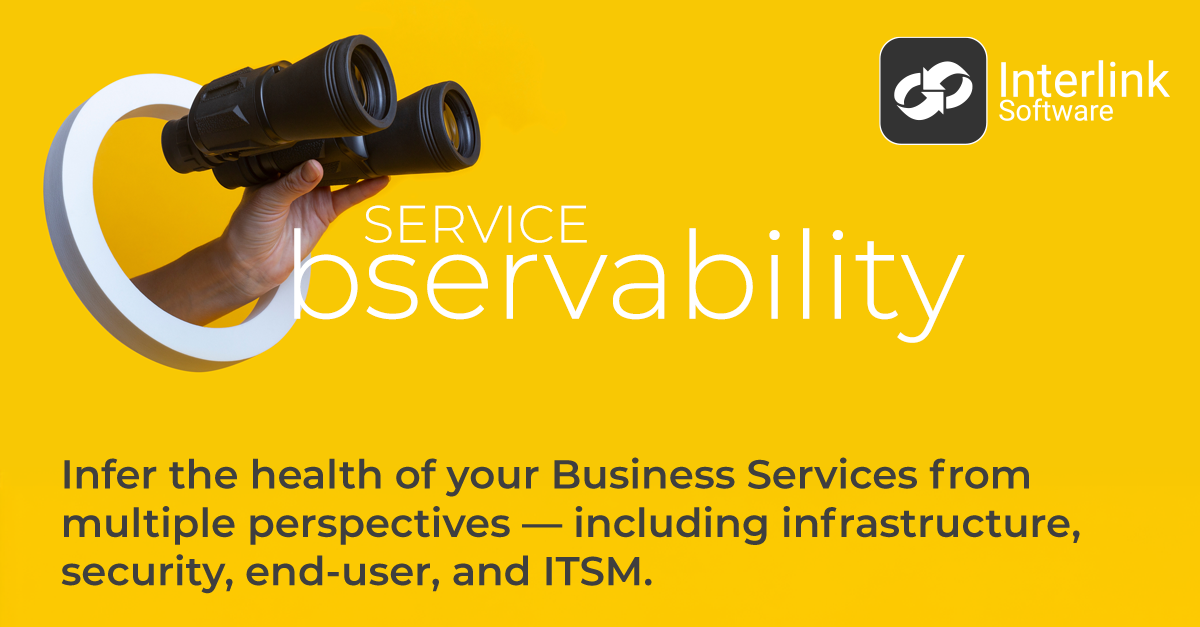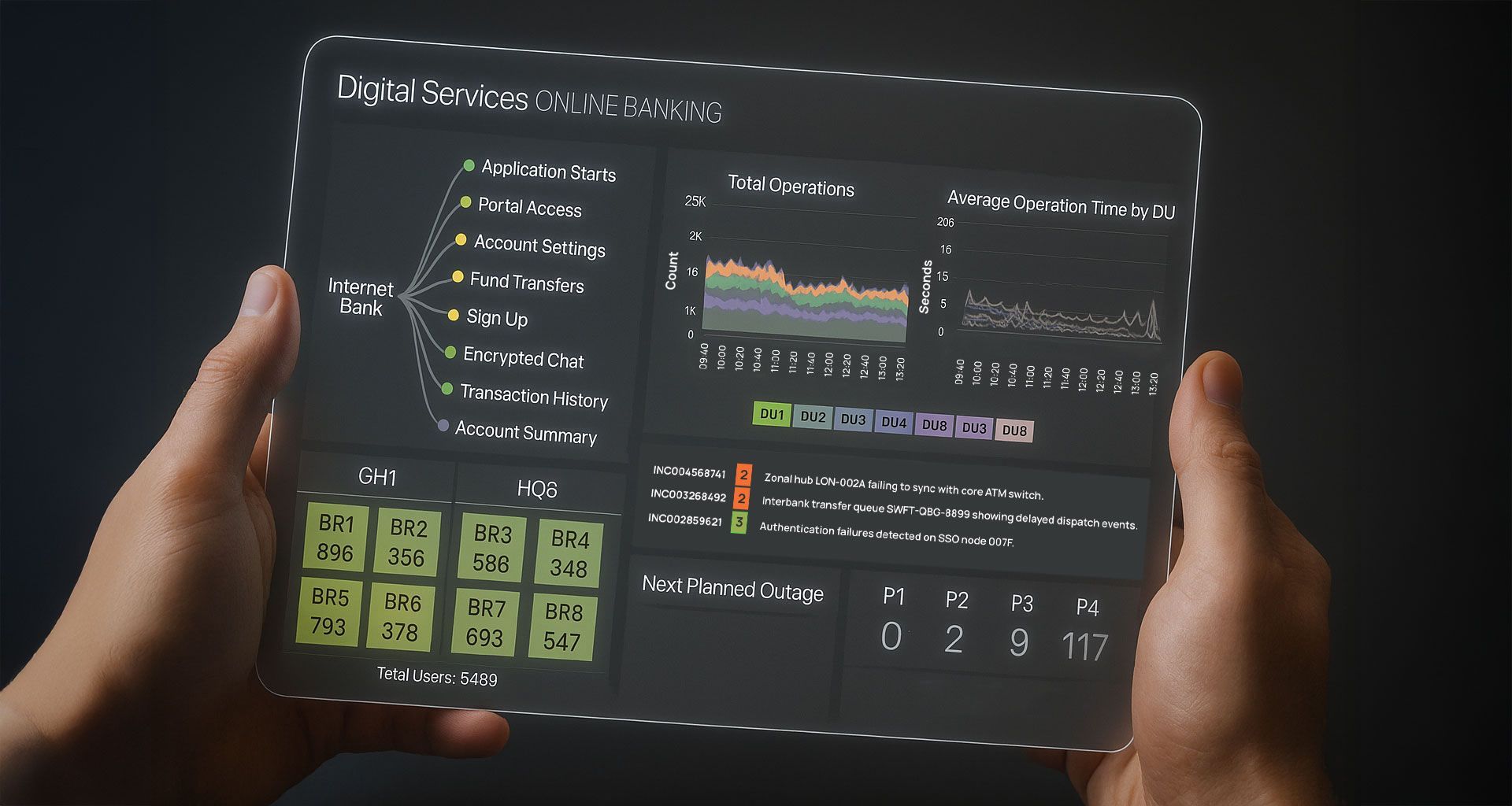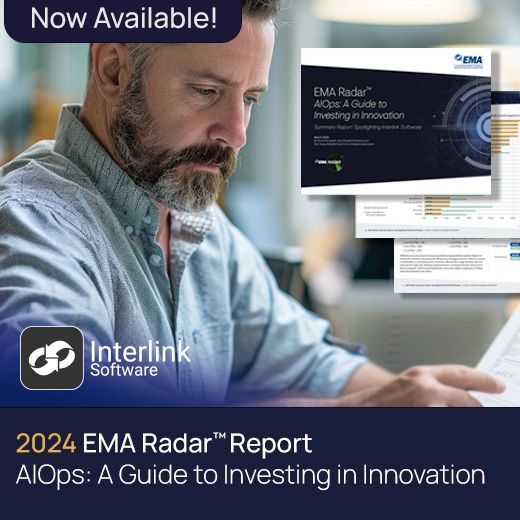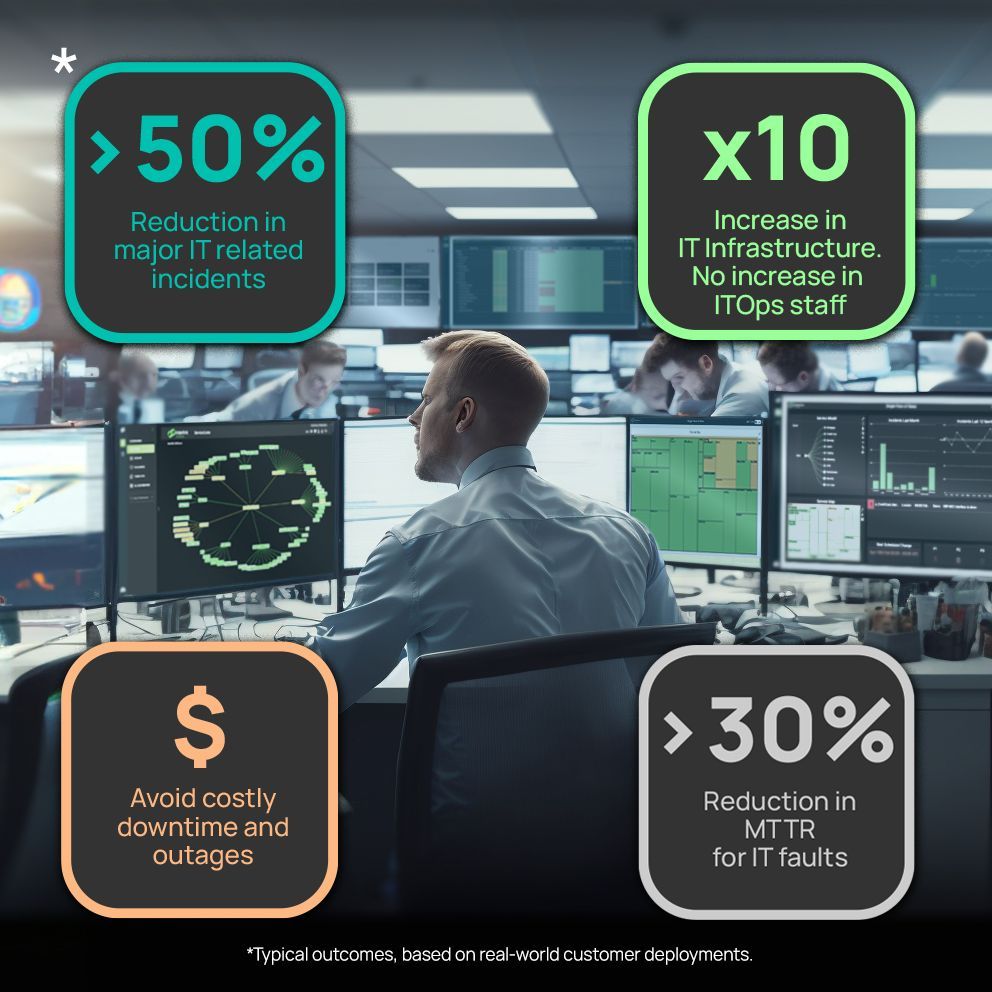Part Two - Event Intelligence vs. AIOps: Key Differences, When to Use Each and Why
The IT environments of large enterprises have become so complex that operational teams have turned to two solution categories in particular to help them improve visibility and gain faster incident response, automate and enable more effective decision-making.
We’re talking, of course, about AIOps, and, more recently, Event Intelligence Solutions.
But what’s the difference? And is one better than the other? The answer is no. One solution is not going to fix all operational teams’ problems. As Event Intelligence Solutions (EIS) vendors emerge, buyers must first understand the characteristics and differences between the two solution types before making platform selection decisions.
Event Intelligence Solutions: Signal-First for Faster Responses
Event Intelligence Solutions (EIS) are designed to analyze, correlate and remediate the event flood that emanates from large, distributed IT systems, so teams can have greater context and prioritization and reduce toil.
This is achieved through policy-based or semantic logic, machine learning and pattern detection, which turns an “events firehose” into actionable insight, which has been further referred to as “curated” intelligence.
The key distinction between Event Intelligence Solutions (EIS) and AIOps lies in EIS’s event-centric design and purpose. These platforms are engineered to specialize in:
- Ingesting, normalizing, correlating data from multiple monitoring tools
- Correlating events across systems and domains
- Cleaning and de-duplicating alerts through intelligent clustering
- Behavior anomaly detection and automated remediation
Automated workflow orchestration for real-time remediation
The value of Event Intelligence lies in its laser-like focus on signals, which typically refers to high-volume, high-velocity events as well as a consistent and orderly process for processing them. This is especially applicable to environments that deal with event storms and fragmented toolchains that severely limit incident response efficiency.
AIOps: Analytics Framework for End-to-End Observability
In contrast to Event Intelligence Solutions, AIOps is a term that refers to the bigger picture of operational intelligence. It’s not just events, but rather, the entirety of data flowing across IT operations - events, logs, metrics, traces, topology, configuration, user experience, and even business KPIs.
In that regard, AIOps is both a philosophy and a broad category of platforms that employ AI/ML at scale to span across, and act on, all types of IT data to aid human decision-making and system automation. In practice, AIOps platforms are expected to provide:
- Visibility across applications, infrastructure, and services
- Anomaly detection, including performance baselining
- Root cause analysis of problems using a combination of data types
- Predictive and forecasting functions, such as capacity planning
- End-to-end observability of hybrid and cloud-native systems
Where Event Intelligence is tactical and target-focused, AIOps is more strategic and end-to-end. AIOps use cases that have also gained a lot of interest in recent years include digital experience monitoring, DevOps acceleration and proactive capacity optimization.
| Feature Area | Event Intelligence | AIOps |
|---|---|---|
| Primary Focus | Event and alert processing | Broad IT operations automation |
| Data Types | Events, alerts, telemetry | Logs, metrics, events, traces, topology |
| Core Use Case | Noise reduction, incident triage | Proactive analysis, observability |
| Time-to-Value | Rapid (pre-integrated with monitoring) | Varies (more architectural setup) |
| Depth vs. Breadth | Deep in event context | Wide in operational scope |
| Role Alignment | NOC, ITOps, service desk | ITOps, SREs, DevOps, business stakeholders |
Which One to Use
Operational teams that are overwhelmed by event storms, siloed tooling, and slower incident triage and remediation will find fast value in EISs. Those interested in the long-term evolution of operational intelligence will gravitate towards AIOps platforms, where investment in full-stack observability and AI-assisted automation is already in place, such as with multi-cloud systems.
In Conclusion
The rise of Event Intelligence Solutions does not mean AIOps will be replaced. Rather, it is complementary to the bigger picture that AIOps pursues. Some organizations opt to get started on Event Intelligence first and then take further steps towards AIOps adoption down the road; others will run both in parallel and are aligned to different teams and use cases within the business.
Interlink Software has adopted that layered strategy, with event-centric solutions that can integrate seamlessly into a broader AIOps strategy.
For enterprises dealing with the increasing complexity of modern operations, it is important to have clarity around the differences so as to make smarter technology investments and experience better business outcomes.

From Monitoring to Meaning: Why Service Observability Platforms Are Essential for Modern Enterprises

What is Single Pane of Glass Monitoring and How Can Enterprises Leverage It for Enhanced Visibility?
















